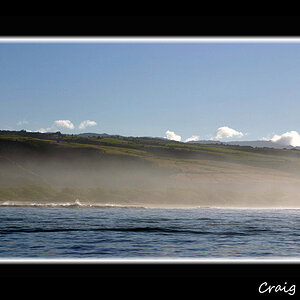Hi Everyone,
New to the forum but I have a simple question and hopefully I'm asking in the right place.
My aunt has a huge Autism Benefit every year which is held in her backyard on the bay. She's never had any pictures of the event because she's been too busy herself to take any (she also is into photography). So this year since I'm attending she asked me to take some. She's not expecting extreme professionalism but I would like to get some good shots and be prepared.
The event starts around 7 or 8 pm (in May) and ends late in the night. So I will be working with dusk and night. The sun sets over the bay so it will light the entire property (as opposed to it setting behind the house). There will be lots of event lighting (all different colors, styles, brightness, etc.) so it won't be completely dark. I'm just not sure how to go about getting the right lighting.
I have a Nikon D5000 and a SB700 to work with. I'm currently working with an 18-55mm which isn't exciting but my aunt has some lenses I can use and I'd also be willing to invest in a new lens. I plan to shoot in RAW.
Thanks for your help!
New to the forum but I have a simple question and hopefully I'm asking in the right place.
My aunt has a huge Autism Benefit every year which is held in her backyard on the bay. She's never had any pictures of the event because she's been too busy herself to take any (she also is into photography). So this year since I'm attending she asked me to take some. She's not expecting extreme professionalism but I would like to get some good shots and be prepared.
The event starts around 7 or 8 pm (in May) and ends late in the night. So I will be working with dusk and night. The sun sets over the bay so it will light the entire property (as opposed to it setting behind the house). There will be lots of event lighting (all different colors, styles, brightness, etc.) so it won't be completely dark. I'm just not sure how to go about getting the right lighting.
I have a Nikon D5000 and a SB700 to work with. I'm currently working with an 18-55mm which isn't exciting but my aunt has some lenses I can use and I'd also be willing to invest in a new lens. I plan to shoot in RAW.
Thanks for your help!


![[No title]](/data/xfmg/thumbnail/33/33030-2d80455c47ebf5f145e0bd5064267aea.jpg?1619735844)
![[No title]](/data/xfmg/thumbnail/35/35263-86f580cf5d28d23109a45984030a79ad.jpg?1619736968)
![[No title]](/data/xfmg/thumbnail/33/33031-909b1e1ff8739eef165c60b70c9a6a38.jpg?1619735845)
![[No title]](/data/xfmg/thumbnail/35/35262-02f8eba4a2a92dbae0b55547bba80b4f.jpg?1619736968)

